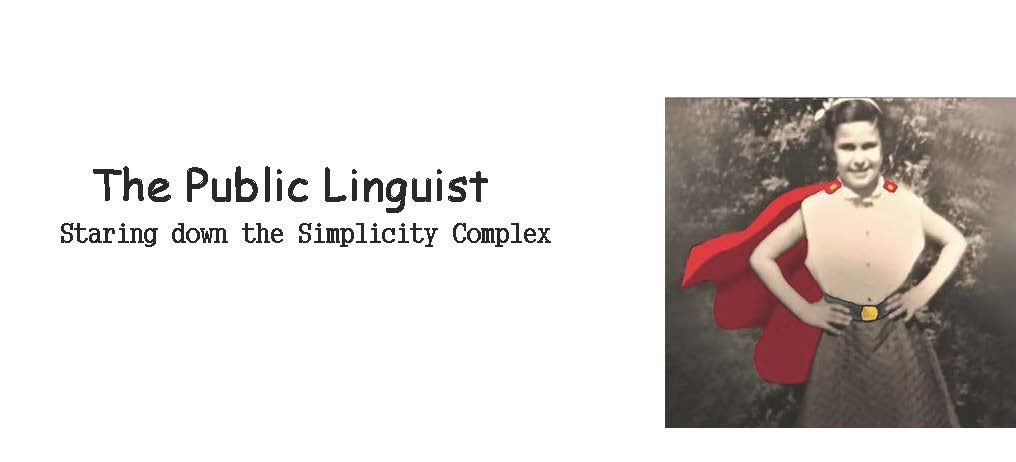By the end of this post I promise to show why these two pictures go together (sort of)
After reading my post yesterday, a dear friend and colleague in public health communication told me he thought I came off sounding like I was tired of Public Health PH experts just repeating year-old messages - say “Wear a Mask” “Social Distance.”
Not so much. So I didn't communicate good enough and I want to try again.
I meant that PH messages are all about rules and they never work to endorse, promote or tweak our common sense.
Background (relevant):
I am the oldest of 5. Characteristically well-behaved, obedient, total by-the-book, rule-following “Goody Two Shoes”. To hear my siblings tell it I ruled over them as the “enforcer”, and now as older adults it still can contaminate our dynamics.
Picture 1
Me at maybe 8 or 9. It was the age when I distinctly recall one day, after school, standing in our living room listening to my mother, in no uncertain terms, tell me I had to do my homework before I went out play. As she was carping on, some, let’s call it, “primal” voice in my head was saying, “Hey I’m a person. She can’t talk to me like that. I can go play and still do my homework later."
(Dear reader – you’re probably stunned that this realization and emerging sense of self was so late in arriving, but so be it.)
While I don’t recall how the issue was resolved, I often think of that voice. Which, following the course of child development, grows into one's sense of self, self efficacy, self worth….empowerment.
2020 60+ years later Covid pandemic - I’ve been a totally by-the-book, mask-wearing, social distancing, hand washing, groceries disinfecting, citizen. Keeping in character I sewed endless masks for neighbors and proselytizing about virus transmission and protection in my charming relentless self.
Picture 2
But over the past month or so, walking in Central Park and around NYC each day. that self-autonomy/efficacy/worth/empowerment voice has wondered why PH doesn’t seem to recognize or care about us trying to think through and formulate ( and correct) our common sense.
For example "Wear a Mask"
But if you’re outdoors and there’s no one in sight you can let your mask down.
I remember months ago Dr.. Sanjay Gupta, ubiquitous during the height of the pandemic, was being interviewed and he said something like what I’m referring to. He said if he’s out running and no one’s around he doesn’t keep his mask on, or something like that. ( forgive me Dr. G if I misquoted here)
This is not the 1950s and public health is promoting polio prevention. Today we are overfed with easily accessible information in all flavors– TV, social media, podcasts, talk on the street. Google and Youtube are the primary ways we get our health information.
What I keep looking for is public health messaging that goes beyond the by the book rules and is more real and relevant to who we are and how we live our lives. Messages that show:
• they have an inkling of us as thinking people
• they know and expect us to be trying to actively problem solve given our individual circumstances
• they can anticipate and respond to the common sense we’re inevitably trying to use.
• by working complexity, contingency and nuance into public health messages they might, just might, win our hearts and minds.
So that's how the two pix relate.
Did this make sense?



What you have said makes total sense. My family-based focus group includes non-tertiary-educated males in male-dominated industries whose information processing is heavily based on what they believe qualifies as 'common sense'. This does not always tally with what we would consider health literacy or scientific literacy, but it says a lot about how health information needs to be addressed to key groups of people who may be resistant to traditional health messaging. As the research has shown (and consistent with my anecdotal experience), the messenger is also important, as many in the 'hard to reach' category are also not big fans of 'Government'.
ReplyDelete